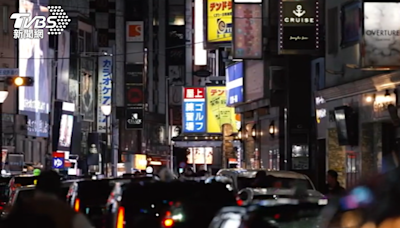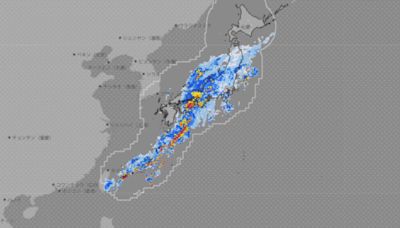搜尋結果
As of 2019, Japan's territory is 377,975.24 km 2 (145,937.06 sq mi). [1] Japan has the sixth-longest coastline in the world at 29,751 km (18,486 mi). Because of its far-flung outlying islands, Japan has the eighth-largest exclusive economic zone in the world, covering 4,470,000 km 2 (1,730,000 sq mi).
t. e. The first human inhabitants of the Japanese archipelago have been traced to the Paleolithic, around 38–39,000 years ago. [1] The Jōmon period, named after its cord-marked pottery, was followed by the Yayoi period in the first millennium BC when new inventions were introduced from Asia.
Tokyo (/ ˈ t oʊ k i oʊ /; Japanese: 東京, Tōkyō, ), officially the Tokyo Metropolis (東京都, Tōkyō-to), is the capital city of Japan and one of the most populous cities in the world, with a population of over 14 million residents as of 2023. The Greater Tokyo Area, which includes Tokyo and parts of six neighbouring prefectures, is the most-populous metropolitan area in the world ...
Bird Tanchō (red-crowned crane, Grus japonensis) Flower Hamanasu (rugosa rose, Rosa rugosa) Mascot Kyun-chan (キュンちゃん) Tree Ezomatsu (Jezo spruce, Picea jezoensis) Hokkaido (Japanese: 北海道, Hepburn: Hokkaidō, pronounced [hokka idoː] , lit. ' Northern Sea Circuit ') is the second-largest island of Japan and comprises the largest and northernmost prefecture, making up its own ...
- Demographics
- Notion of Ethnic Homogeneity in Japan
- Native Japanese People
- East Asian
- Southeast Asian
- South American
About 2.3% of Japan's total legal resident population are foreign citizens. Of these, according to 2020 data from the Japanese government, the principal groups are as follows. The above statistics do not include the approximately 30,000 U.S. military stationed in Japan, nor do they account for illegal immigrants. The statistics also do not take int...
After the demise of the multi-ethnic Empire of Japan in 1945, successive governments had forged a single Japanese identity by advocating monoculturalism and denying the existence of more than one ethnic group in Japan. It was not until 2019 when the Japanese parliament passed an act to recognize the Ainu people to be indigenous. However, the notion...
Ainu
The Ainu people (also Aynu) are an indigenous people native to Hokkaido and northeastern Honshu, as well as the nearby Russian Sakhalin and Kuril Islands (both formerly part of the Japanese Empire), and Kamchatka Peninsula. They possess a language distinct from modern Japanese. They traditionally practiced tattooing and followed religious beliefs that are considered animism.[citation needed]
Ōbeikei (Bonin) Islanders
The Ōbeikei Islanders are an ethnic group native to the Bonin Islands (also called the Ogasawara Islands), part of Tokyo Prefecture. They are descendants of Westerners, Polynesians, and Kanaks who settled Hahajima and Chichijima in the 18th century. They speak a dialect of English, called Bonin English, and have traditionally practiced Christianity. Legal status of Bonin Islanders passed back and forth between the United States and Japan over the years and, during and after World War II, many...
Yamato
The Yamato people are the dominant native ethnic group of Japan and because of their numbers, the term Yamato is often used interchangeably with the term Japanese.
Chinese
Chinese people in Japan are the largest foreign minorities in Japan. They comprise 0.64% of Japan's population. Chinese people are mostly concentrated in the Osaka, Tokyo and Yokohamaareas.
Koreans
Koreans in Japanare the fifth largest ethnic minorities in the country. Most of them arrived in the early 20th century. As of 2022, there are 438,211 Koreans in Japan who are not Japanese citizens.
Nivkh
A small number of Nivkh people resettled in Hokkaido when Japan evacuated southern Sakhalinat the end of World War II.
Filipinos
Filipinos in Japan formed a population of 202,592 individuals at year-end 2007, making them Japan's third-largest foreign community along with Brazilians, according to the statistics of the Ministry of Justice. In 2006, Japanese/Filipino marriages were the most frequent of all international marriages in Japan. As of March 12, 2011, the Filipino population of Japan was 305,972.As of April 1, 2020, the number of Filipinos in Japan is estimated at 325,000.
Vietnamese
448,053 Vietnamese people were living in Japan by the end of 2020.
Brazilians
There is a significant community of Brazilians in Japan, which is home to the second largest Brazilian community outside of Brazil. They also constitute the largest number of Portuguese speakers in Asia, even greater than those of formerly Portuguese East Timor, Macao and Goa combined. Likewise, Brazilmaintains its status as home to the largest Japanese community outside of Japan.
Peruvians
Like Brazilians in Japan, there are Peruvians in the country, some of whom had migrated to Peru when the country opened its doors to foreign workers. Former Peruvian President Alberto Fujimoriis one example of a Peruvian Japanese.
Imperial State of Greater Japan or the Great Japanese Empire. The Empire of Japan, [c] also referred to as the Japanese Empire, Imperial Japan, or simply Japan, was the Japanese nation-state [d] that existed from the Meiji Restoration in 1868 until the enactment of the reformed Constitution of Japan in 1947. [8]
Japanese (日本語, Nihongo, [ɲihoŋɡo] ⓘ) is the principal language of the Japonic language family spoken by the Japanese people. It has around 120 million speakers, primarily in Japan, the only country where it is the national language, and within the Japanese diaspora worldwide. The Japonic family also includes the Ryukyuan languages ...


















